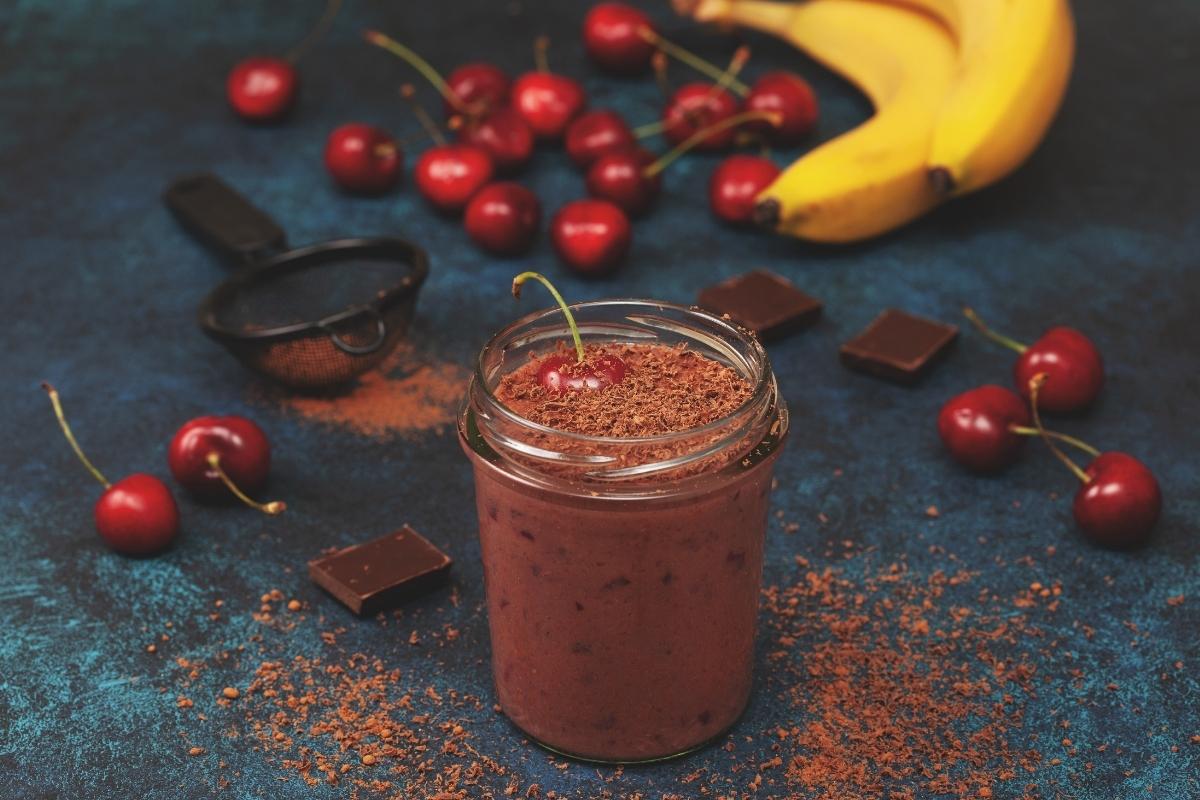October 2022 - Light, Medium or Dark Roasted. Does it even matter ?
Date Posted:3 October 2022
“Ethics is knowing the difference between what you have a right to do and what is right to do". Potter Stewart

October 2022
Welcome to our subscriber newsletter.
Please be aware peak season for freight is fast approaching - starting in a fortnight from the 3rd week in October and running until the end of January.
Since April this year, we have used a new, high-speed AusPost facility - a system which is not available to all Victorian merchants or retailers.
This change has continued to deliver major benefits by improving transit times. The biggest difference involves bypassing a major choke-point in Victoria - Melbourne Parcel facility at Sunshine. At times we see "express" like service performance from our regular parcel freight.
Will be interesting to see how the high-speed system copes during the most painful period of the year - mid-November through mid-December.
Another day, another bunch of new coffee brands launched
It never seems to stop or slow down. The number of entrants rushing to launch their "online coffee" brand with a dream of success from outsourced "drop-shipping".
Obviously, life's a beach when you can get slaves to do all the hard work. Maybe they don't read the news and ignore the current extreme labor shortages.
Barely a day passes without some newbie with stars in their eyes and almost no knowledge of coffee asks us to provide a full outsourced model in supporting their new brand yet to be launched. Thanks, but no thanks.
If there wasn't already a confusing array of 3000 brands and offers available in Australia, into the mix come all the influencers, celebrities and other wannabe's with their stylized stories of how they "do it differently with highly ethical actions and beliefs".
Just last week a batsman in the current Australian cricket team launched his own new coffee brand online. Good luck, it's a jungle out there.
Last month a big social media celebrity lurking in the shadows behind a 3rd party digital "front" agency wanted some coffee products for flogging to their followers alongside their bundles of "wellness solutions".
Shamefully, they didn't care about taste, quality or traceability of the proposed "certified" products. Nope, this was only ever about how much margin they could make by charging double normal retail prices in promoting organic features and offering in return some questionable and unproven health benefits. Lab verified mycotoxin-free - snake oil, indeed.
Another new brand launched in the last 2 months by a Melbourne couple is themed upon their "plant-based healthy lifestyle" (didn't realize what I ate made any difference to roasted coffees). One of probably a dozen in the last couple of months.
Alongside these "thoughtful approaches" are strong social and ethical convictions - partnering with carefully selected coffee roasting brands. In other words, the only brands willing to engage with new start-ups and that's not a big list.
But the true irony of this Melbourne brand promising so much "hope", like many other new coffee brands launched since the pandemic and cloned like sausage factories, was the unmistakable fact they are selling coffees containing robusta.
Ok, that's cool, everyone is entitled to their choices, but when it comes with trying so hard to convince the coffee-buying public they are different by tugging on "emotional triggers of healthy alternatives, social and ethical justice", it's certainly not clear just how this Melbourne coffee loving couple and their robusta-laden coffee are providing those health or social benefits.
Considering that robusta in their coffee was grown at low-altitude, absolutely drowning in chemicals by unfortunate farmers caught in a poverty trap. But hey, don't let the truth stand in the way of a good story about Melbourne coffee lovers and their ethical pursuits of a healthy lifestyle and charging a premium for the privilege.
This folks is mainstream coffee turning into a freak show where sellers have no vested interests or any control over quality. It's all about alluring images and contrived stories designed to take your hard earned $$ in exchange for high margin mediocrity.
Please keep your hands on the wheel at all times.
The Stuff of Secrets
There is no secret we think plum, cherry and dark chocolate are a winning trifecta in coffee.
This month's Secret Label takes sweetness to another level in a soaring symphony of delicious acids.
If beauty is a power, then a smile is it's sword and this month's coffee will slice through any milk-based espresso with Excalibur's ease.
Light, Medium or Dark
The historical classification of roasted coffees into light, medium or dark is well and truly outdated and inaccurate way to describe coffees.
In our 3rd article on the topic of roast levels, we help explain how there's a lot more to consider when trying to buy coffee that has been roasted a certain way.
Warning, it's a heavy read and if you are a coffee enthusiast, there may be some great gems in there for you.

October 2022 Secret Label
Yep, it's all that and more.
We love the combination of plum, cherry and dark chocolate in coffee.
When it's also super-sweet with delicious acids that stand up prominently through milk beverages with red juicy notes, then bingo we have a classic.
Let's keep it simple this month - glorious sweetness and punchy flavors.
Sorry, all sold out.
.jpg)
Light, Medium or Dark (LMD) - does it even matter ?
It's not easy today trying to purchase coffee in Australia from 3000+ retail brands all screaming for attention.
One of the greatest misconceptions perpetrated on the retail side of roasted coffee is a historical oversimplified classification for "roasted coffee" into 3 basic ranges - light, medium or dark.
Wish it was that simple......alas, far from it.
Light, Medium, Dark (or LMD) is an outdated and inaccurate way to describe roasted coffees.
It's like telling someone needing detailed directions to just "head north".
Yet LMD remains a strong anchor in the myriad of ways sellers of roasted coffee articulate their offerings, particularly when they attempt to prove their often vacuous points of difference.
Many coffee drinkers are still leading their purchase decisions with the Light, Medium, Dark criteria - no wonder retailers keep playing to that drum.
Perhaps the biggest misconception of LMD is that dark roasted coffees are stronger.
Just not true.
Strength of a coffee is a measurement of it's caffeine level and that actually decreases the darker a coffee is roasted.
Roasting coffee longer or darker won't necessarily increase or improve the flavour (beyond medium) and it's this urban myth which gained traction long ago and continues to prevail today. No only does flavor disappear the darker a coffee is roasted, the delicious acids are also escaping.
Often when consumers ask for "strong", they may indeed be wanting "bite" or bitterness.
Most sections of the coffee industry are generally striving to reduce bitterness by carefully manufacturing "cleaner" cups, although that can also be limited by quality of the ingredients and a brand's own style or the market demographics.
What happens when coffee is roasted.
When raw coffee is roasted, there are many hundreds of transitions (and transformations) in the "green" coffee until it reaches the desired or target end point.
Generally, this end point could be any of the 40+ shades of brown. It's never, ever as simple as "medium brown".
Before the introduction of monitoring tools fordisplaying one or more temperature records in real time during the roast batch cycle, akin to using a microscope, operators relied upon crude olfactory senses - sight, smell and sound.
They looked at colour through a small glass aperture, smelt a sample of the beans during the roast and listen carefully for cracks (beans exhausting moisture like popcorn).
Today, those olfactory methods are largely obsolete and deemed crude or incapable of managing the dynamic, split-second responses during roasting. In many respects, the use of olfactory senses is "too late" as the changes required during roasting need to be made "ahead" of the event.
Manual methods tend to only be used when commissioning new roasting platforms for obtaining basic calibration.
There are certainly no romantic notions of "passed down secrets from roast masters" that some brands attempt to portray as their "difference".
Unfortunately, there are still many roasters unable or unwilling to grasp modern tools by continuing to rely upon basic controls of time and temperature combined with optional olfactory tasks.
Some won't upgrade their platforms to gain insight into what's really happening during their roasts and continue to do things exactly the same way ignorant of changing coffee industry landscape.
For the most advanced platforms, like our industrial Brambati - the most intelligent roasting system available, we make use of AI tools to help build and optimize the precision and consistency. The human element (me) is watching and managing, tuning and tweaking.
How coffees are evaluated for quality
There are many factors that combine to create a cup profile for a specific coffee. Final colour is certainly not one of them. Color is just a guide for the roaster, like a signpost on a journey.
As roasters, we don't tend to think in terms of colour but instead we manage the shape of a roasting curve.
This happens from the first moments raw coffee enters the roasting chamber and plays our every second of that 12 to 15 minute batch. You see, every moment is critical when roasting coffee, not just the exit.
What we look for when roasting is our desired results of " acidity, sweetness, body, flavour and finish" in balance.
Truth is, I never, ever look at the final colour of the roasted coffee because it's remarkably different depending upon the origin and varietal. A few coffee brands still use instruments to measure roast colour, but again I ask "what's the point of a colour level if the coffee doesn't taste great because of events well before the end".
Some coffees have naturally higher sugar level (brix) and present darker when roasted whilst others will show lighter shades of brown despite being roasted to a deeper level.
Of course there will always be the group of exceptions. Those roasters stuck in rigid ways of quantitative quality control using colour instead of taste.
Don't laugh, most big brands in Australia still use colour as their primary QA metric as it provides them with some false sense of security and an easy way to defend mediocrity or achieve their beliefs in compliance.
When the coffee industry grades coffee, it is roasted light and the brew method to assess this light roast is remarkably different to ways in which consumers normally drink coffee.
A process called "cupping" and it's intended to reveal defects in the underlying quality of the coffee and help determine a calibrated score and the associated description for it's attributes.
Generally, these light roasted coffees are not suitable for milk-based espresso or cafe type coffee beverages as the lighter roast has thin body and a short finish, often leading to a disappointing cafe style experience.
Shifting styles - a walk on the lighter side.
One of the most significant changes in coffee roasted over the last 12 years has been a gradual shift from dark roasting towards a more generalized medium (or medium dark, depending upon your context), specifically in Australia.
We are not talking about a revolution here, just a noticeable shift.
Whilst other coffee consuming countries may have continued with their historic traditions for their roasted coffees, in Australia there has certainly been a trend towards lighter styles for espresso and cafe consumption, even if it's only a barely fractional change each year.
Recently, a couple of Australia's largest brands announced major changes in their direction towards a more "middle medium" rather than the dark or medium-dark of their heritage. My guess is that finally they are starting to accept that consumer tastes have shifted.
In parallel to the changes from dark to medium has been the continued growth of a distinctly different segment specifically for lighter roasts.
These lighter roasts have fueled alternative brewing methods, e.g. pour over, Aeropress, filter, cold drip, etc. embracing fruitier elements and producing an almost "tea like" liquor and make for a delicious "black coffee experience" when done right.
Filter-style, light roast coffees are very popular in Scandinavian countries and markets around the world where trading of the higher quality lots occur, e.g. Australia, Japan and South Korea, etc.
Lighter roasted coffees are generally described or categorized under the generic term called "filter roasts".
So when you see a "filter roast" coffee being offered for sale, it will almost always mean that the coffee has been roasted "lighter" than espresso.
This also highlights another issue of calibration when using the simplistic terms of light, medium or dark.
Espresso roasts are a broad range of styles largely open for individual brand interpretation. So that means one brand's idea of espresso roast could be dark, whereas another brand may think it's really light.
You can see now why the simplistic light, medium and dark (LMD) lack the accuracy for describing a coffee.
Beware the hype of light roasted coffees
It's not just owners of innovative or alternative brewing devices that have embraced light roasted coffees.
A small and growing band of purist espresso enthusiasts have jumped on the "light roast" bandwagon to discover a new universe of flavours and experiences.
However, the journey towards lighter roasted coffees used in espresso has not been easy.
For almost a decade, many of these light roasted coffees were sour, grassy, herbal, woody, thin, lacking flavour, etc. when used for espresso brews.
It was an era when roasters experimented with profiles and ignored basic principles of "developing" the raw coffee sufficiently. Think uncooked food.
Often, many brands playing in the "light roast" segment were trying to push extremes of "light roasted", sometimes with disastrous results.
Eventually, the industry started to lift it's game by roasting filter style with similar profiles to traditional espresso coffees but finishing the roast shorter, at lower end temperatures, eliminating many of the sour, grassy and woody notes.
Another term emerged around 9 years ago, the maligned "Omni roast". Marketed by those ambitious brands trying to convince consumers they had developed a "holy grail" in coffee roasting.
It was a "big promise" - to prepare coffees satisfying the demands of both light and medium roasting environments, e.g. filter and espresso. In our option, Omni-roasts are a nothing but a bunch of exaggerated claims and often can't achieve success in either category - stuck in the no-man's land of the middle.
Even with perfectly roasted lighter style coffees, espresso extraction remains challenging and this has to do with something called the soluble characteristics of the roasted coffee.
Light roasted coffees, similar to those prepared for filter style are far more difficult to use for espresso. The grind, dose and temperature is far more critical, or less forgiving with light roasted coffees. In fact, it's often a knife-edge.
To dial-in light roast coffees on espresso involves a lot more skill plus it also requires high-end equipment - think commercial grade. That Breville or Sunbeam gear is not going to cut it I'm afraid.
The longer a coffee is roasted (by implication also the darker) it will generate beans that are more soluble.
Rarely will brands talk about the solubility of their coffees.
Back in 2012/2013 the specialty coffee industry was gripped by the TDS frenzy - total dissolved solids measured by portable refractometers.
Why then is solubility not a major part of the descriptor for roasted coffee?
Mostly because it's difficult or complex to measure and then translating those results into a format that can be understood easily by consumers was never going to happen. The "coffee thought police" mandates TDS ranges of between 19 and 24, yet the taste was not to everyone's liking.
In our opinion, there is nothing worse than wasting a lot of coffee by wrestling with the grind setting, dose and extraction variables to chase a decent shot.
This is exactly what can happen with lighter roasted coffees used for espresso.
It's never easy and despite skill levels or equipment capability, there will be inevitable wastage as the parameters of the roasted coffee are adjusted to more closely match the extraction variables.
It brings us to another mythical term used in the coffee industry - brew recipes. Brew recipes are not the solution often promised and won't solve extraction problems. Basically, brew recipes are too specific to an environment or instance and never will a brew recipe be able to apply universally. A good topic for explaining in next month's newsletter.
When the stars align and everything works a treat, it's possible to generate amazing espresso from lighter roasted coffees. But is it worth the wastage and frustration ?
Often the first coffee of the day is early morning when the body is not functioning properly. Who wants to wrestle with a grinder and machine to play around with wasting many shots, particularly if you have to rush off to work.
Medium and darker roasted coffees are more soluble. The darker the roast, the more soluble.
A soluble coffee will extract a lot easier for espresso applications. But just because the coffee has been roasted medium, or medium-dark, does not guarantee that the coffee will be easy to use.
That folks is the entire point of this article.
Colour, or the claimed roast level means nothing - it's all about how the coffee is roasted for the entire period it was in the roast chamber, the quality of the ingredients and it has less to do with how long or "dark" the coffee was roasted.
It's entirely possible to roast coffee that may appear dark on the outside yet it's not dark inside, e.g. just like a steak on a BBQ, presenting as cooked outside but not inside.
Dark roasted coffees are the domain of the lower grade qualities. Dark roasting helps hide or mask certain defects so the resultant coffee takes on more homogenous characteristics.
Few brands will dark roast high quality coffees, that's nuts. It would be such a shame and a waste of great quality beans to roast dark and lose the fruity sweetness only to be replaced with a bland and less complex character.
The same can also be said for light roasted (or Filter Style) coffees. Better quality grades are required for lighter roasted coffees as the defects in lower quality lots would be amplified by the lighter roasting and in most cases produce an inferior taste.
In summary, we recommend our readers keep an open mind when it comes to roasted coffees - this means don't get stuck in a hole thinking that only dark roasted coffees are suitable for your palate or preferences.
Similarly, we also caution that light roasted (Filter Roast) whilst offering amazing fruits, acidity, sweetness and complexity, it also comes at the cost of being more difficult to use for espresso applications. If you add dairy (or dairy alternatives), the lighter roast styles may fail to provide sufficient body and finish to satisfy your palate.



